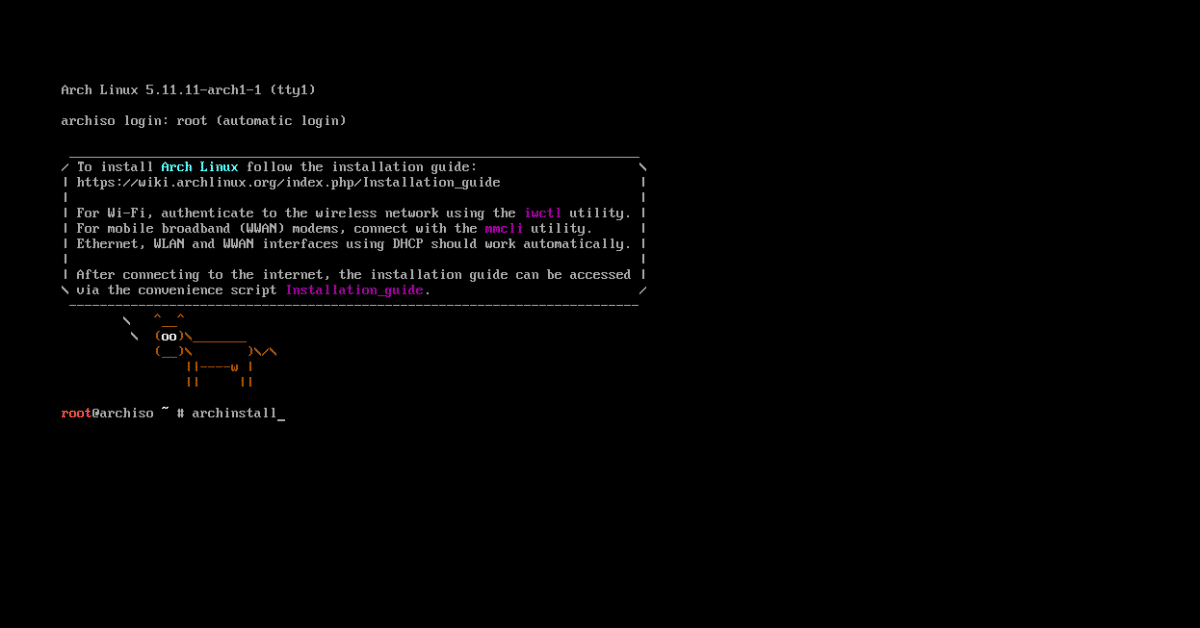
It became known the release of the new version of the Archinstall 2.3.0 installer, which since April was announced by the Arch Linux developers and that at first it was believed that it was a joke in relation to April Fool's day.
For those who are still unaware of the Archinstall installer integration, you should know that this installer operates in console mode and is offered as an option to automate the installation. By default, as before, manual mode is offered, which involves the use of a step-by-step installation guide.
The installer offers two modes: guided and automated:
- In interactive mode, the user is asked sequential questions covering the basic setup and installation manual steps.
- In automatic mode, you can use scripts to create typical automated installation templates. This mode is suitable for creating your own assemblies designed for automated installation with a typical set of configurations and packages installed, for example for a quick installation of Arch Linux in virtual environments.
With Archinstall, can create specific installation profiles, for example, the "desktop" profile to select a desktop (KDE, GNOME, Awesome) and install the necessary packages to make it work, or the "web server" and "database" profiles to select and install web content , servers and DBMS. You can also use profiles for network installations and automatic system deployment to a group of servers.
Archinstall 2.3.0 Key New Features
This new version of archinstall 2.3.0 addresses the many problems raised by the community, as well as some improvements to the installer, which improves reliability and especially the use of it.
As the developers share:
We would like to thank everyone who submitted issues, provided feedback, and most importantly, suggested or contributed to solutions to all of these issues.
This is by no means a perfect version, there is a lot of work to do. But we think this is a step in the right direction with accessibility and stability improvements and some security improvements for the guided template we ship. Below is a list of all the changes since the previous version, and we'll start with the most important changes to highlight them.
On the part of the changes that have been made and those that stand out the most, we can find that the correct support for GRUB bootloader and disk encryptionIn addition, support for customizing Btrfs subsections was added.
It is also highlighted that detection of the presence of an active service espeakup.service was provided (visually impaired speech synthesizer) in the installation media and automatic copy of its settings during installation.
In addition, it is also highlighted that nowe support multiple encrypted volumes (a bit limited, it's on or off, but multiple partitions will be encrypted). With which all the encrypted partitions are protected by the passphrase.
Moreover, initial support for plugins has been proposed, allowing the user to create their own drivers and plugins for the installer. Plugins can also be loaded over the network using the option «–plugin = url | location ", a configuration file ({" plugin ":» url | location "}"), an API (archinstall.load_plugin ()) or a package manager (pip install yourplugin).
Of the other changes that stand out:
- Redesigned interface for manual partitioning of disk partitions.
- Improved reliability of disk operations such as partitioning, encryption, and mounting.
- The default installation mount point is no longer / mntsino / mnt / archinstall
Disk layout and configuration has been moved from user_configuration.json to user_disk_layouts.json - BlockDevice (). Device_or_backfile now returns the backfile when the device is a loop device, BlockDevice (). Device still returns limited information of the type (raid, crypt and others).
- Partition (). Size is now a read-only value and therefore the Partition (size = X) parameter has been removed
Partition (). Allow_formatting has been removed / deprecated, this is handled via direct function calls instead of automatically wiping a partition.
Finally, if you are interested in being able to know more about it, you can consult the details In the following link.